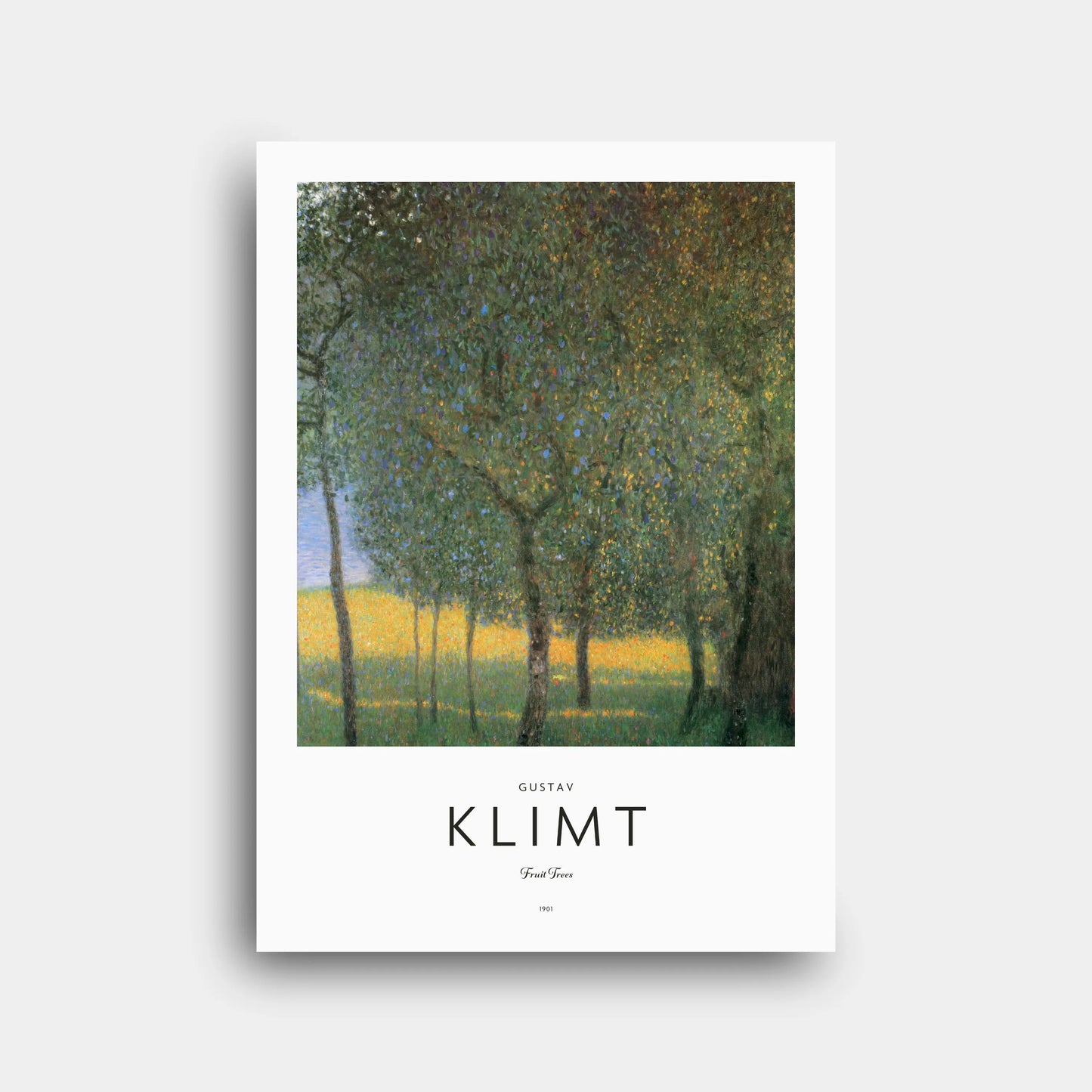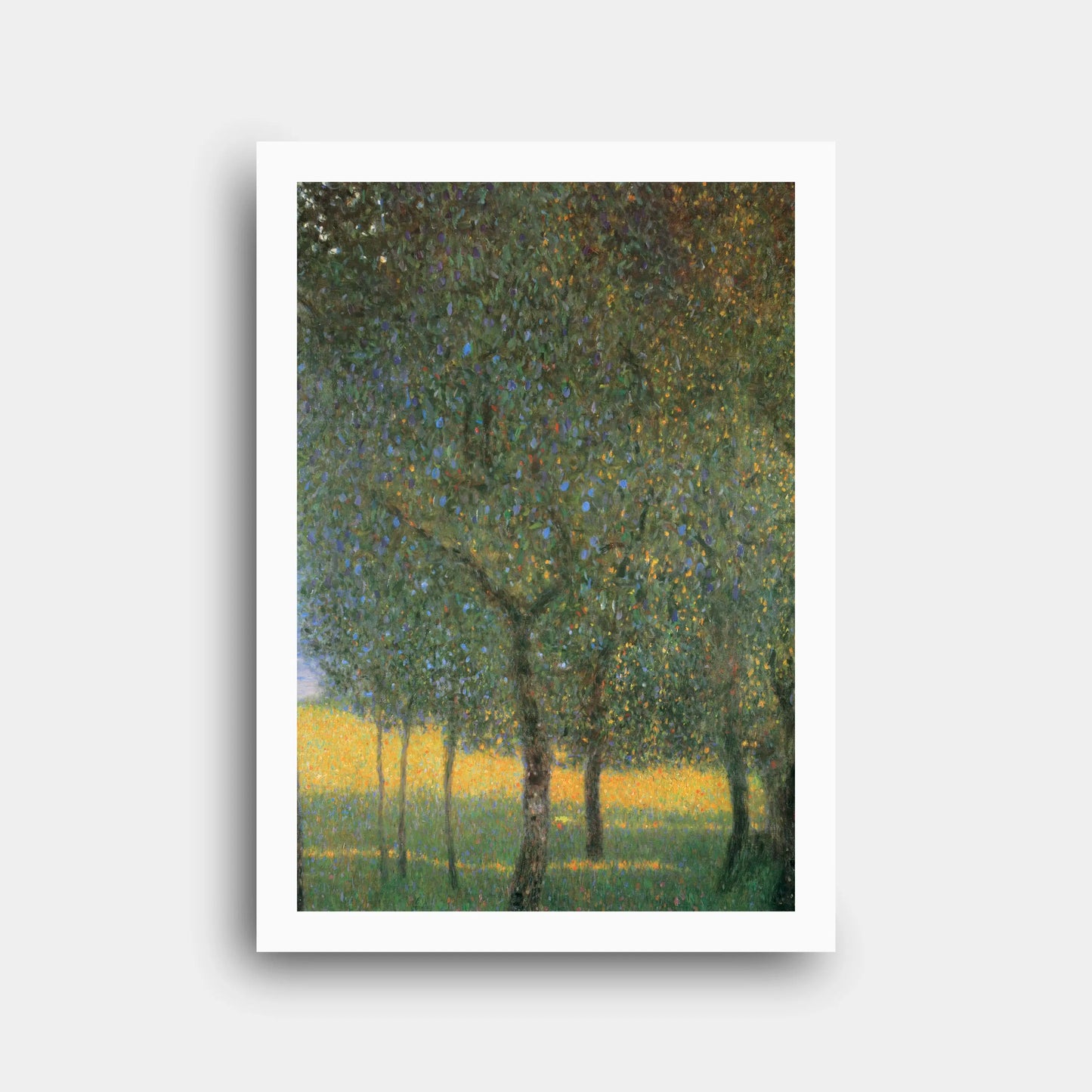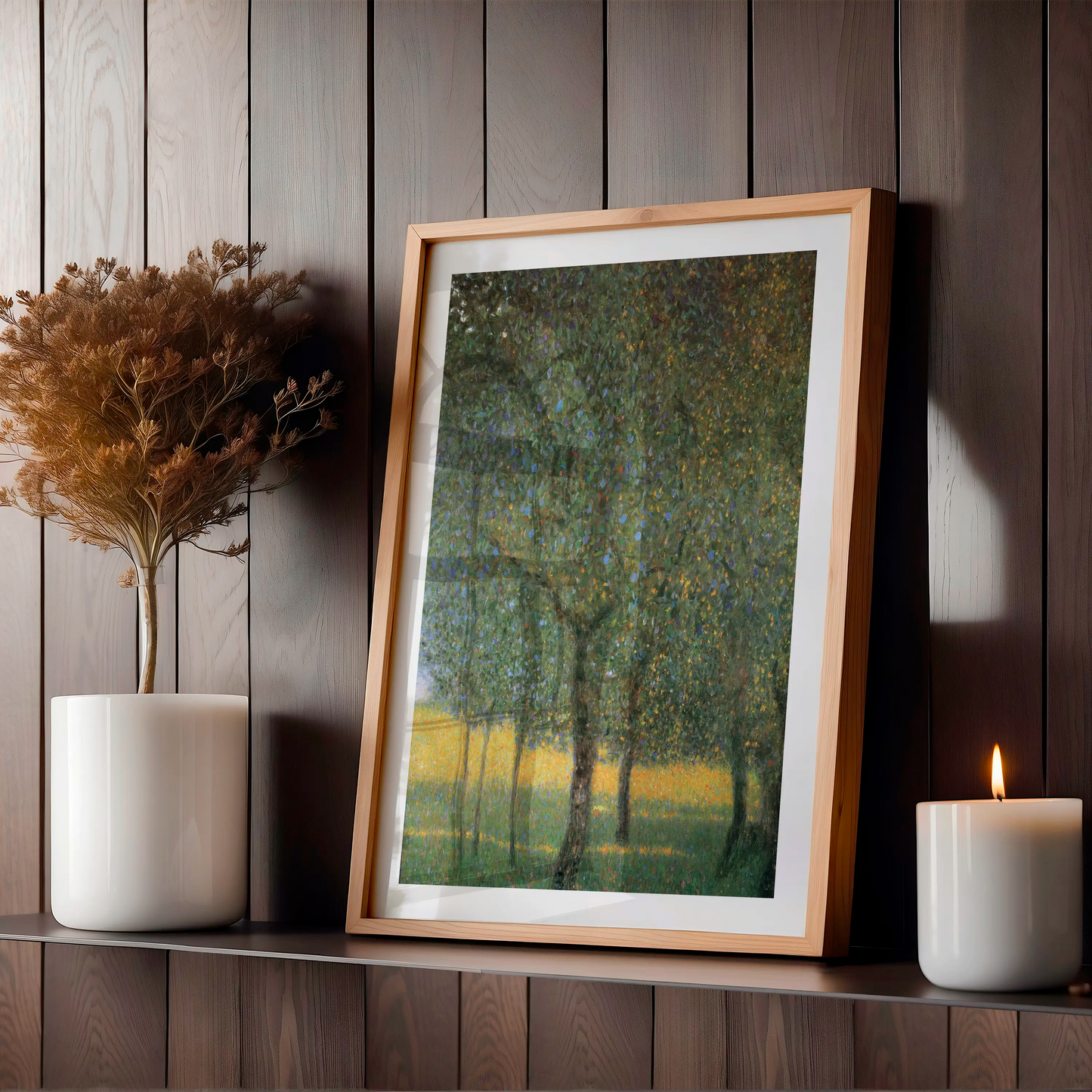Gustav Klimt - Fruit Trees (1901) - Paper Poster N182
Gustav Klimt - Fruit Trees (1901) - Paper Poster N182
Couldn't load pickup availability
Share
Paper Poster | Canvas Print | Digital File
1. Historical and Artistic Context
Gustav Klimt painted "Fruit Trees" in 1901, during a period when his art was transitioning into the renowned Golden Phase. This was shortly after the heated debates surrounding his University of Vienna ceiling paintings, which caused scandal but also cemented his reputation as a radical innovator. Seeking refuge from controversy, Klimt retreated to the Austrian countryside, particularly Lake Attersee, where he produced luminous landscapes. These works allowed him to explore nature as a sanctuary and a canvas for experimenting with decorative forms and symbolism. "Fruit Trees" exemplifies this retreat into nature and Klimt’s embrace of rural motifs.
2. Technical and Stylistic Analysis
The painting is square in format, a choice Klimt favored as it provided balance and compositional harmony. The canvas is filled edge to edge with trees, their branches interwoven to create a tapestry-like effect. Rather than focusing on spatial depth, Klimt creates a flat, ornamental surface through dense, dappled brushstrokes. His use of tiny touches of color—greens, yellows, violets, and blues—creates a mosaic of natural light and texture. The fruit within the trees appears as glowing accents, giving the painting both vibrancy and a decorative rhythm. The absence of a clear horizon intensifies the sense of immersion in nature’s abundance.
3. Symbolism and Interpretation
Trees and fruit carry long-standing symbolic associations, and Klimt’s work resonates with these traditions. Fruit has often been a metaphor for fertility, abundance, and the cycles of life. By presenting trees heavy with fruit, Klimt may have alluded to renewal and the richness of existence. The way the fruits shine against the muted green canopy evokes both sensuality and mystery, central themes in much of Klimt’s art. Some scholars interpret these works as reflections of Klimt’s desire to find purity and stability in nature, a counterbalance to the intensity of his more erotic and allegorical canvases.
4. Technique and Materials
Klimt worked with oil on canvas, applying countless small brushstrokes that recall Impressionism but carry his distinct ornamental sensibility. The layering of pigment produces a shimmering effect, much like a tapestry. The fruit trees are not rendered in strict realism; instead, Klimt distills their essence through decorative motifs. His technique emphasizes surface pattern over three-dimensional illusion, aligning with the Vienna Secession’s ideals of uniting fine art and design. The square format itself was a Secession hallmark, and Klimt’s mastery of color harmony shows his awareness of both modern European painting trends and decorative traditions.
5. Cultural Impact
Although Klimt is most famous for his portraits and allegorical works, his landscapes exerted a strong influence on modern perceptions of nature in art. "Fruit Trees" embodies a harmony between humanity and the natural world that appealed to a society grappling with industrialization. These works inspired later artists to explore the potential of landscape not just as scenery but as a field for abstract pattern and emotional depth. Today, Klimt’s landscapes are celebrated for their beauty, and "Fruit Trees" adds to the dialogue between art and nature, balancing natural observation with ornament.
6. Critical Reception and Scholarly Interpretations
During Klimt’s lifetime, critics responded favorably to his landscapes, seeing them as less provocative than his figure paintings. Reviewers praised their decorative quality and poetic mood. In modern scholarship, "Fruit Trees" is often highlighted as an example of Klimt’s ability to fuse Impressionist techniques with Symbolist intentions. Art historians note how he imbues simple subjects with layered meaning, transforming a quiet grove into a meditation on life’s cycles. The painting has also been studied in the context of Klimt’s broader body of Attersee landscapes, emphasizing its role in shaping his artistic identity around 1901.
7. Museum, Provenance and Exhibition History
"Fruit Trees" belongs to a private collection, which makes it less accessible than Klimt’s museum-held works. While its exhibition history is sparse compared to iconic works like "The Kiss," the painting has been documented in catalogues raisonnés and Klimt exhibitions that surveyed his landscapes. Its private ownership contributes to its aura of exclusivity and has kept it somewhat lesser-known to the general public. Nonetheless, reproductions and scholarly references ensure it remains part of the discourse surrounding Klimt’s oeuvre and the significance of his Attersee period.
8. Interesting Facts
1. "Fruit Trees" was painted during Klimt’s summer retreats to Lake Attersee.
2. The square format was a hallmark of Klimt’s Secessionist compositions.
3. Klimt’s landscapes were nicknamed “painted tapestries” for their dense surface detail.
4. Fruit motifs in Klimt’s art often symbolized abundance and fertility.
5. The painting features a prominent tree with distinctive blue fruits.
6. Klimt often walked alone in forests for inspiration, earning the nickname “forest demon.”
7. His landscapes were considered less scandalous than his figure paintings.
8. The mosaic-like brushwork shows influence from pointillism but remains unique.
9. "Fruit Trees" is part of Klimt’s catalogued Attersee landscapes.
10. The painting remains in private ownership, adding to its rarity and mystique.
9. Conclusion
"Fruit Trees" stands as a luminous example of Klimt’s artistic versatility and his ability to transform simple natural subjects into deeply poetic works. Combining decorative abstraction with symbolic resonance, it reflects his unique blend of Impressionist technique, Secessionist ideals, and Symbolist depth. Though privately held, the painting remains significant within Klimt’s oeuvre, embodying his search for tranquility and meaning in nature. It invites viewers to contemplate not only the beauty of fruit-bearing trees but also the universal cycles of life and abundance that they represent.











